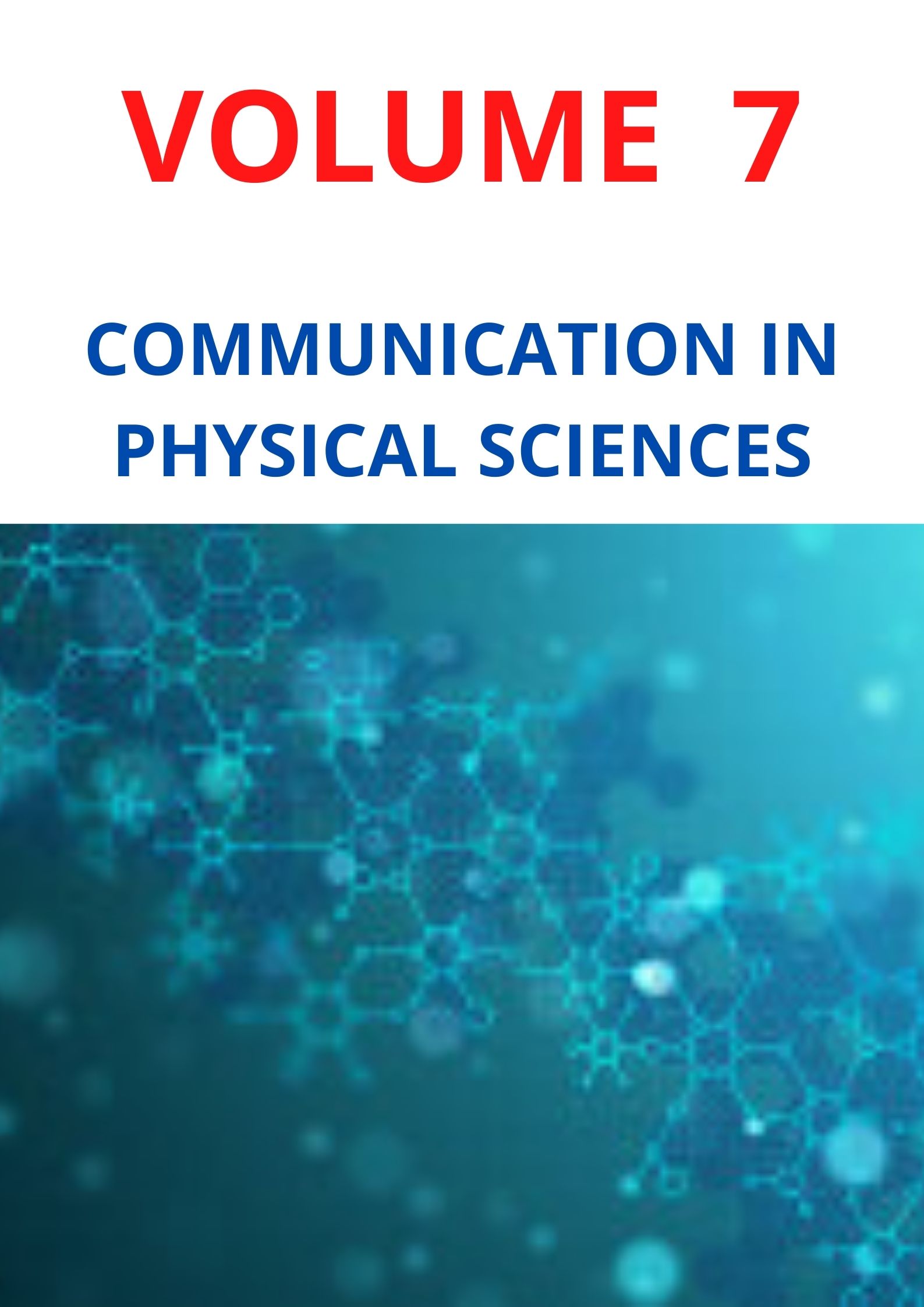ATR-FTIR Quantitation of Isopropyl Alcohol (IPA) and Ethanol in Some Covid-19 Targeted Hand Sanitizers in Nigeria
Keywords:
CoV-2, COVID-19, hand sanitizers, isopropyl alcohol, ethanol, quantitation, ATR-FTIRAbstract
D. Paul* O. B. Adesina and *C. E. Gimba
The Corona Virus originated from Wuhan, China in the later part of 2019. As at the end of 2020, no medication or vaccine is available for the treatment and/ or control of the Covid-19 pandemic yet. However, preventive measures have been suggested by the World Health Organization (WHO) which include proper and regular personal hygiene and a healthy life style. Regular washing of hands using soap and water and the use of Hand sanitizers have been suggested as the first line of defense against the SARS COV2 virus. In this study, the Shimadzu FTIR-8400S Fourier Transform Infrared Spectrophotometer with Attenuated Total Reflectance (ATR) accessory was used for the quantitation of the isopropyl alcohol (IPA) and Ethanol content of nineteen (19) different brands of hand sanitizers used in Kaduna state, Nigeria and its environs for the non-pharmaceutical prevention of COVID-19. Results revealed an Isopropyl alcohol concentration in the range of 10.155% to 85.684% and an Ethanol concentration in the range. Of the nineteen samples studied, five had an IPA concentration below 50%. Nine of the samples had concentrations above the World Health Organization (WHO) recommended 75%. The implications on the health of the populace, with respect to the efforts to combat and contain the ravaging SARS COV-2 virus and the resultant. COVID-19 are discussed
Downloads
Published
Issue
Section
Similar Articles
- Akanimo Edet Jonah, Stevens Azubuike Odoemelam, Marc Ogbuagu, Assessment of Gaseous Pollutants, Particulate Matter and Meteorological Parameters Around Ibom Power Plant in Ikot Abasi Local Government Area Of Akwa Ibom State, Nigeria , Communication In Physical Sciences: Vol. 11 No. 4 (2024): VOLUME 11 ISSUE 4
- Ifiok Dominic Uffia, Ofonimeh Emmanuel Udofia, Christiana Samuel Udofia, Study of Potential Effect and Health Benefits of Soaking Time on the Nutritional Composition and Some Anti-Nutrient Factors in Cowpea (Vigna unguiculata) , Communication In Physical Sciences: Vol. 11 No. 3 (2024): VOLUME 11 ISSUE 3
- Siaka Abdulfatai Adabara, Bleaching Potentials of Local, Foreign and Regenerated Bleaching Earth: Comparative Study , Communication In Physical Sciences: Vol. 8 No. 4 (2022): VOLUME 8 ISSUE 4
- Samson Osinachi Nwadibia, Henry Patrick Obong, Ephraim Okechukwu Chukwuocha, Analytical Solutions of the Schrodinger Equation with q-Deformed Modified Mobius Square Potential Using the Nikiforov-Uvarov Method , Communication In Physical Sciences: Vol. 9 No. 4 (2023): VOLUME 9 ISSUE 4
- Ayomiposi Sodeinde, Oluwafemi Orekoya, Daniel Jayeoba, Oyebade Adepegba, Effect of Green Information and Communication Technology on Survival of Electricity Distribution Companies in Nigeria , Communication In Physical Sciences: Vol. 12 No. 3 (2025): VOLUME 12 ISSUE 3
- Kelle Henrietta Ijeoma, Oluade Oludare Abiola, Achem Daniel, Human Health Risk Assessment of Pesticide Residues in Solanum lycopersicum Fruit Sold in Lagos Metropolis, South-West Nigeria , Communication In Physical Sciences: Vol. 5 No. 4 (2020): VOLUME 5 ISSUE 4
- Ahamefula A. Ahuchaogu, Chukwuemeka T. Adu, Review of Reverse Osmosis as Green Technology against Water Supply: Challenges and the way Forward , Communication In Physical Sciences: Vol. 6 No. 1 (2020): VOLUME 6 ISSUE 1
- Agada Livinus Emeka, Sonloye Seyi Abiodun, Impacts of Temperature and Precipitation Variability in Northeast Nigeria: a Case Study of Yobe State , Communication In Physical Sciences: Vol. 8 No. 2 (2022): VOLUME 8 ISSUE 2
- Yakubu Isa, Radiya Muhammad Said, Juliet Wallen Piapna, Abdulhaq Bashir, Development and Applications of the Type II Half-Logistic Inverse Weibull Distribution , Communication In Physical Sciences: Vol. 11 No. 4 (2024): VOLUME 11 ISSUE 4
- Ifeanyi E. Otuokere, J.C. Anyanwu, K.K. Igwe, Synthesis, Spectra and Antibacterial Studies of 4-{[(E)-phenylmethyl- idene]amino}-N-(1,3-thiazol-2-yl)benzenesulfonamide Schiff Base Ligand and its Ni(II) Complex , Communication In Physical Sciences: Vol. 7 No. 2 (2021): VOLUME 7 ISSUE 2
You may also start an advanced similarity search for this article.




